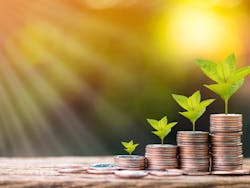New York regulators this week voted to expand — beyond just solar — the distributed energy resources eligible for compensation under the state’s new value stack crediting.
The Public Service Commission gave a greenlight to apply the credit to certain energy storage projects, along with tidal energy, biomass and food-waste digestion configurations that meet specific requirements.
Value stack crediting is part of New York’s Reforming the Energy Vision, a policy strategy to animate markets for distributed energy and boost the state’s effort to meet half its electricity needs from renewables by 2030. It attempts to place a monetary value on public and grid benefits that distributed energy creates but receives no compensation for.
“To sustain our progress, we must continue to reward utilities and energy developers for investment decisions based on the full value that all kinds of renewable energy facilities provide to our electric system,” said John Rhodes, chairman of the Public Service Commission, following the commission’s approval of the new resources Wednesday. (Case Number 15-E-0751)
Project owners receive the compensation in the form of bill credits. To be eligible the projects must interconnect to the utility grid and have customers in the utility territory
The commission considered expanding eligibility for combined heat and power, but decided that further analysis is required, after stakeholders raised concern about emissions from CHP. Although highly efficient – and therefore often championed by clean energy advocates – CHP often uses natural gas a fuel.
Commission staff plan to consider CHP eligibility in more depth in the near future
The new resources now eligible for value stack crediting are:
- Stand-alone storage systems including regenerative braking, with a rated capacity of 5 MW or less
- Tidal energy generators
- Biomass generators and certain food-waste digestion configurations that meet the state clean energy standard requirement
Value stack crediting considers the worth of energy, capacity, environmental, demand reduction and locational relief from distributed energy resources.
Track news about microgrids and distributed energy. Subscribe to the free Microgrid Knowledge newsletter.







